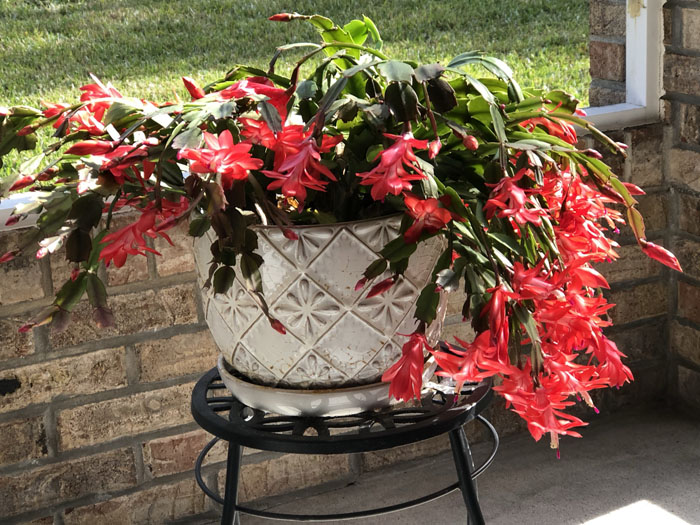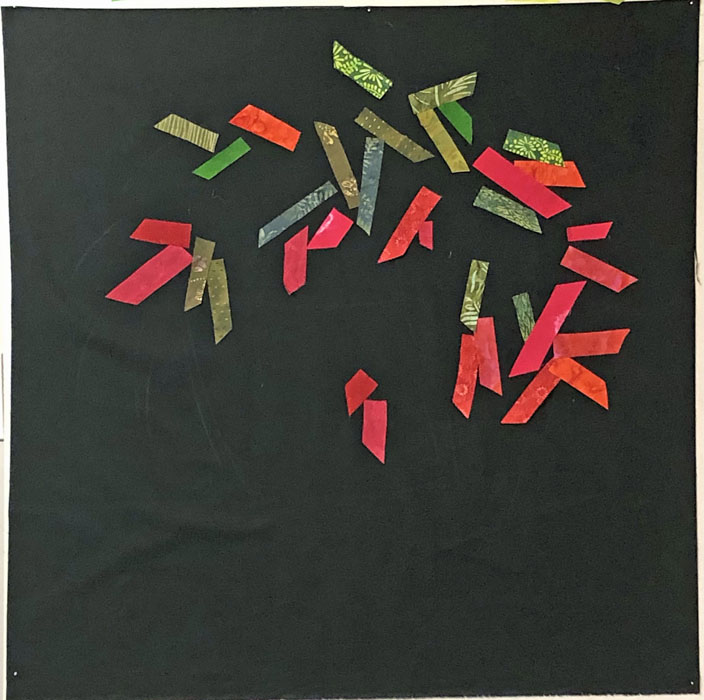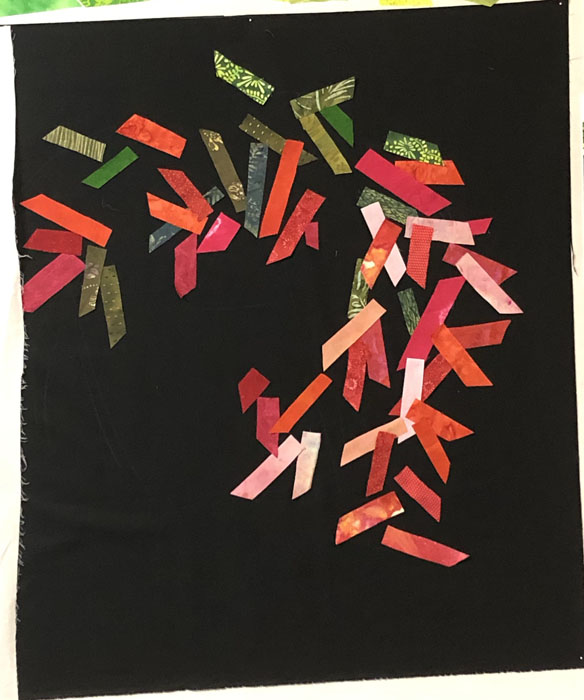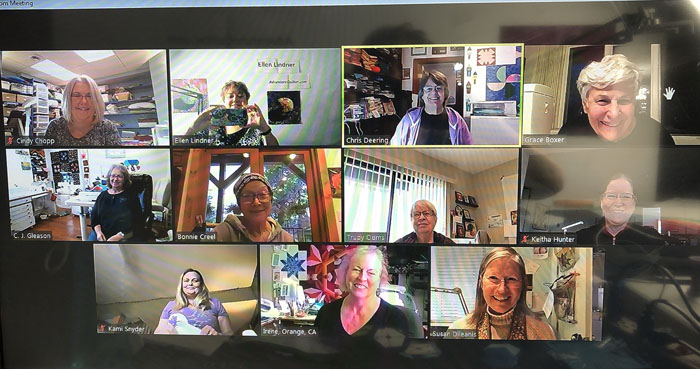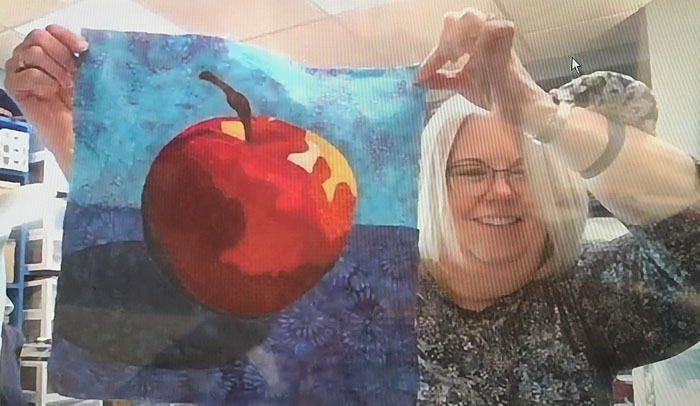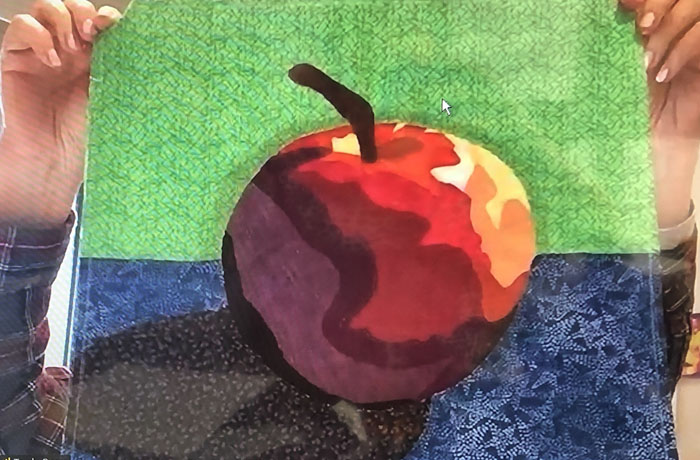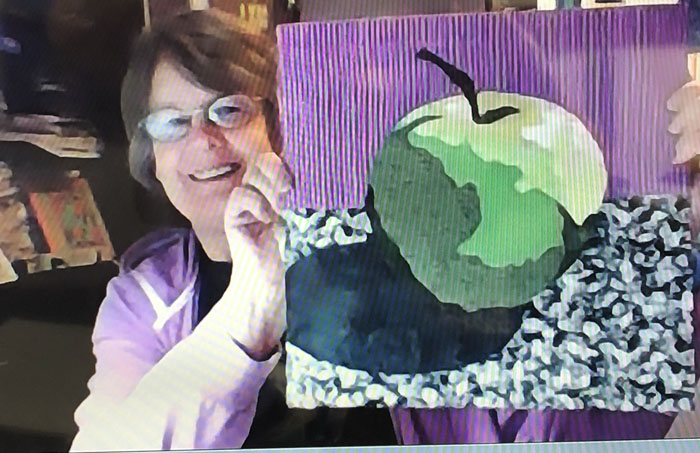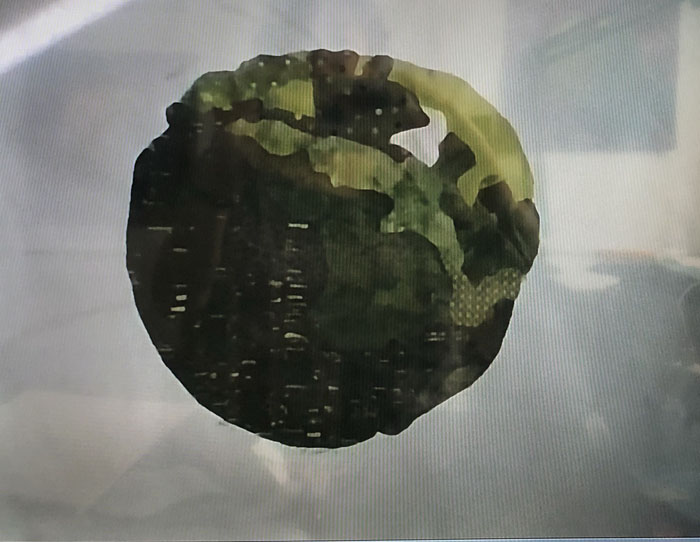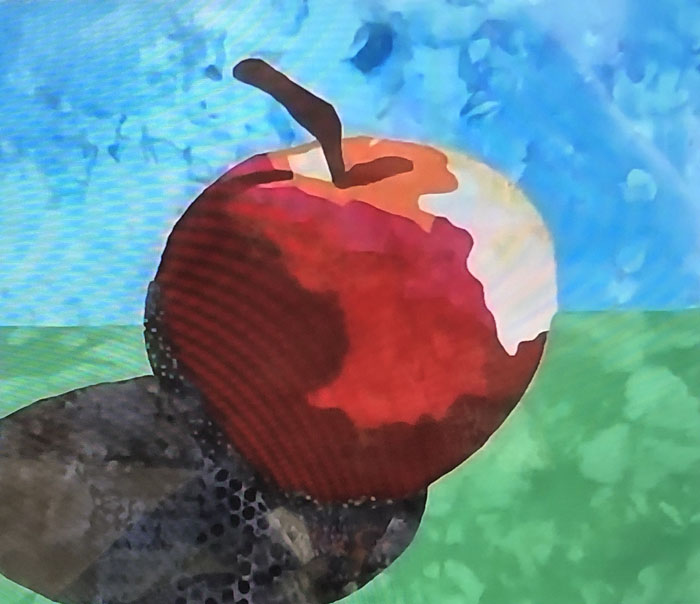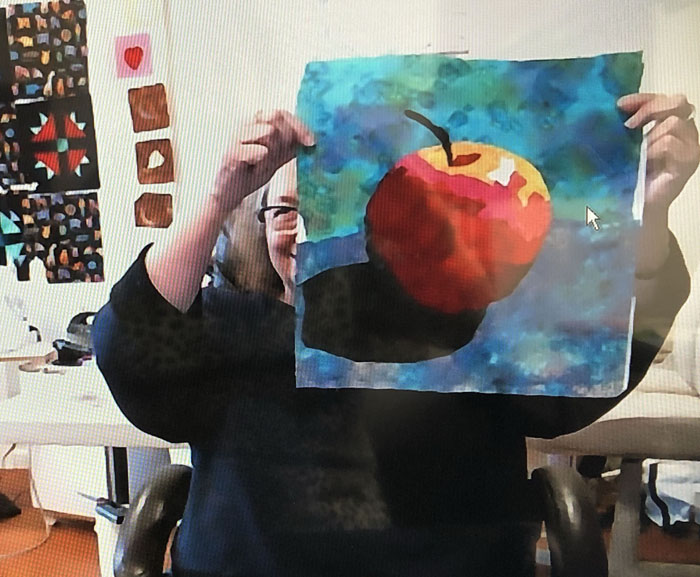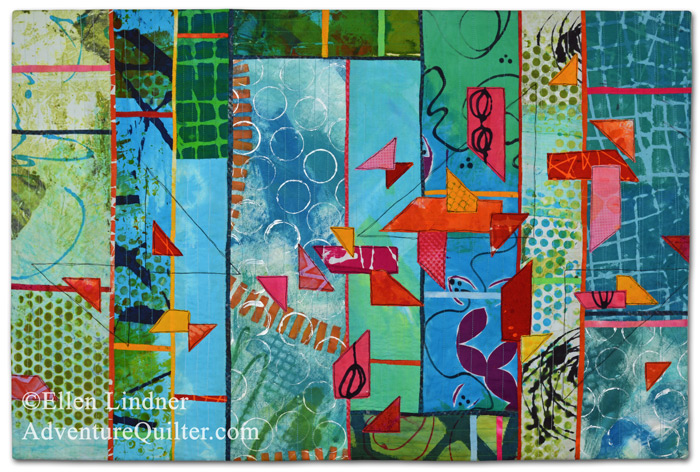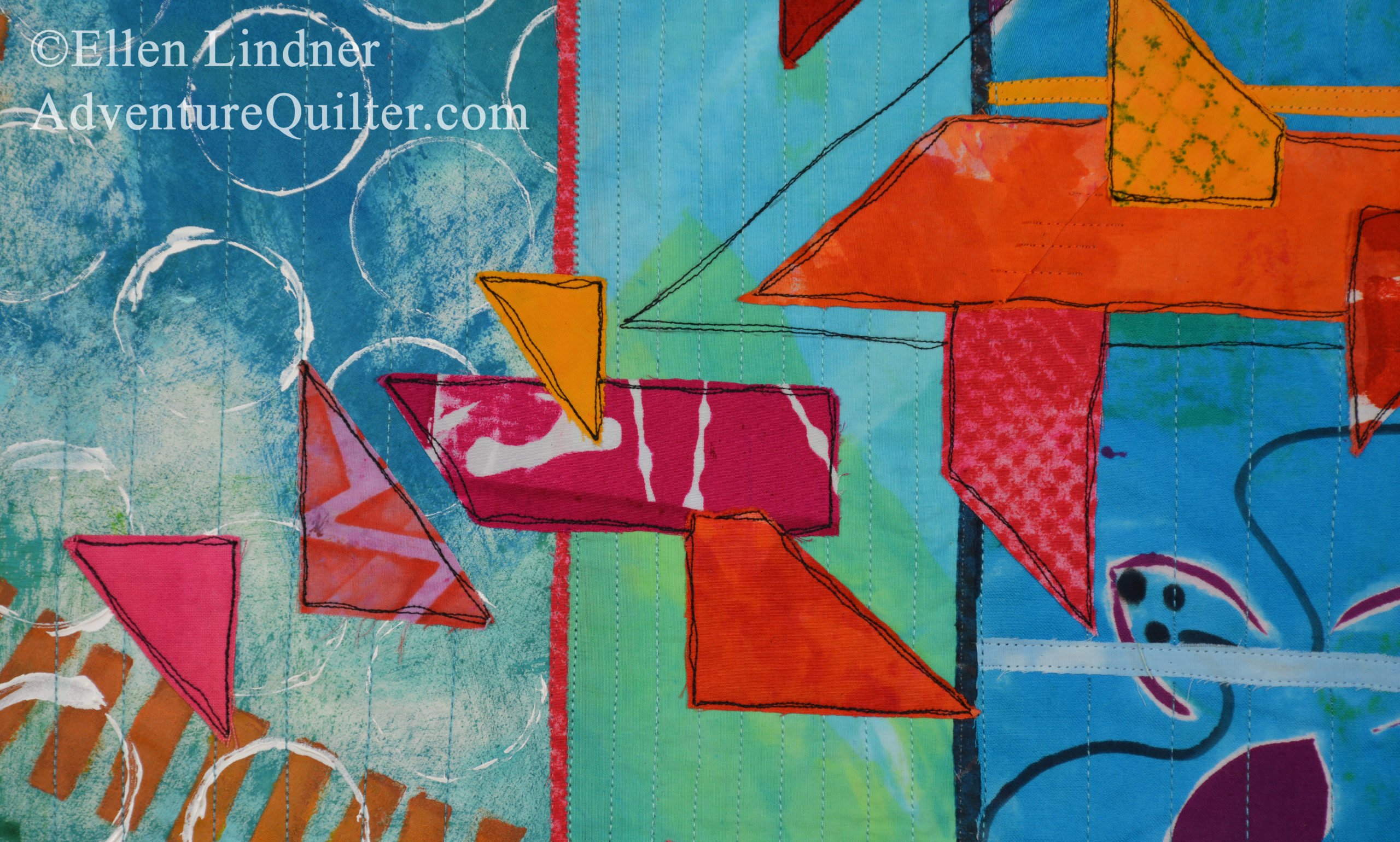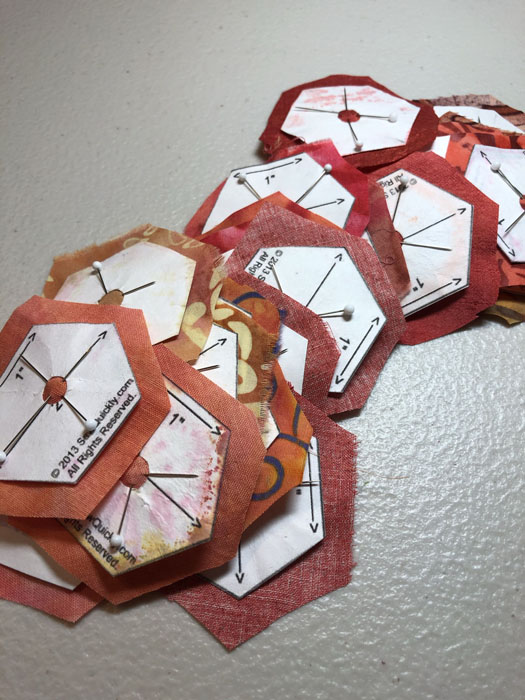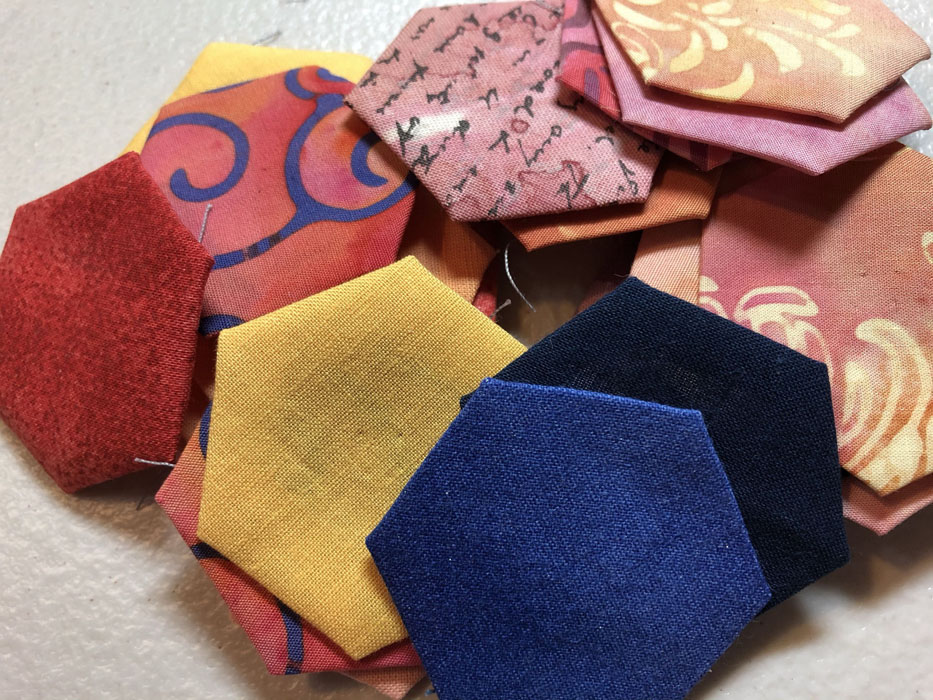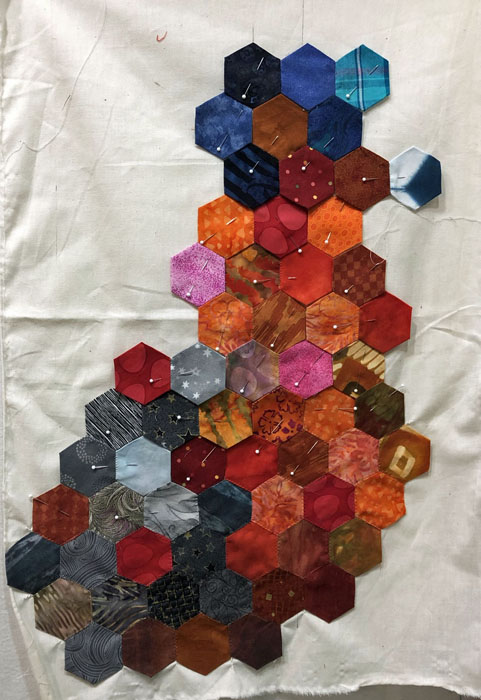The supply list for my class, Design Your Own Nature Quilt, includes artistic couraage, and the ladies in Venice, FL brought it in spades! During our two day class they didn’t even whimper. 😉 But, they DID make some extraordinary quilts.
Let’s start with Helen, who was taking her first ever quilt class. (These images were taken at the end of class, as seen on my computer screen.)
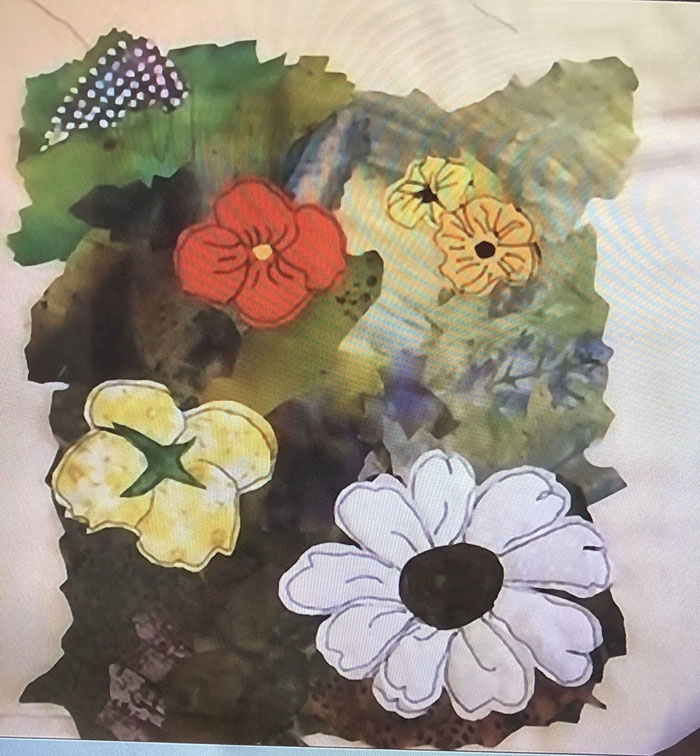
Didn’t she do a great job? Everything is constructed onto a muslin base. Helen has decided to preserve the raggedy uneven edge of her composition, so she’ll tuck her border fabric(s) under the edge of the composition fabrics, where they’ll also be supported by the muslin.
Joan C. rearranged her flowers and cropped the composition to get a really pleasing arrangement. And, after a brief consultation, she had the skills she needed to make a second piece in the next few days. I love that!
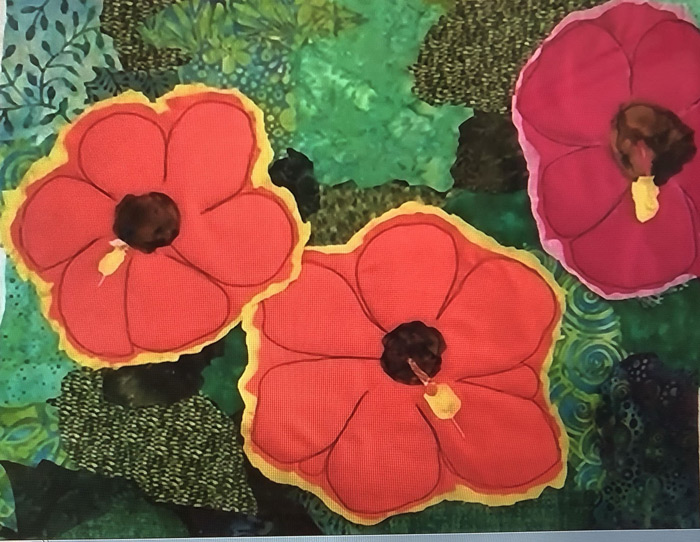
Elaine’s poppies live up to their name, since they seem to pop off the background! Her inspiration photo had MANY more flowers in it, but she wisely edited it down to just a few. This gave her the ability to enlarge them and show them off. And what about that black stitching? Doesn’t it add wonderful detail?

Joan D. depicted the best parts of several photos of sea grape leaves. She created tiny lines by adding slits to her leaf fabrics, so the underneath vein fabric could show. Here she’s auditioning the position of the sea grapes. I think she’s about got it.
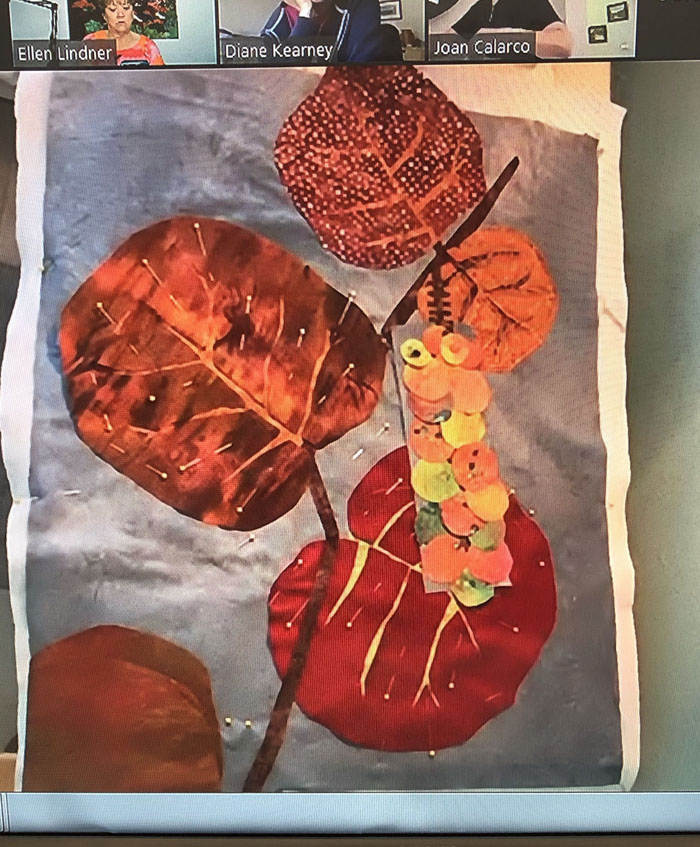
Did you notice Joan’s background fabric above? No? Good. That means it did it’s job of showing off the leaves. Brava!
Teaching via computer means I can’t easily see the student’s quilts as they’re working. There are ways for them to show me, but if they’re confidently working away, I don’t ask to see their progress. Such was the case with Nancy. Therefore, I was floored when she showed us this at the end of day one. She did a great job of playing up the contrast and adding depth.
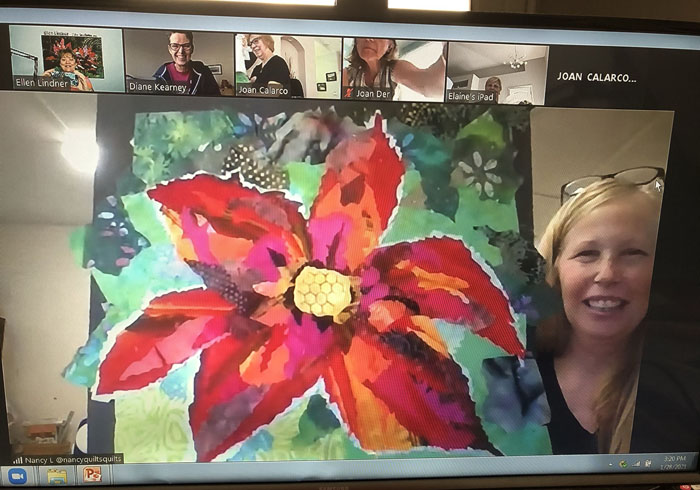
Then, on day two, she did this. Whoa, Nancy, you’re making me look good!
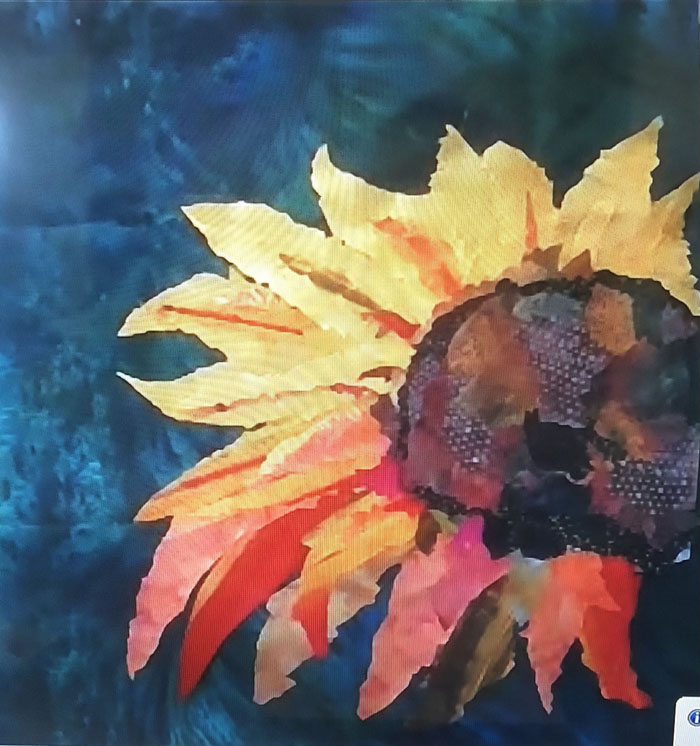
Unfortunately, I didn’t get a photo of Pat’s project. She had a lively yellow flower well underway.
I always say that this is my favorite class to teach because the students learn so much. That definitely held true with this group and I’m itching to teach it again! (Hint, hint: here’s the info if you think your guild might be interested.)
Ellen Lindner, proud teacher
